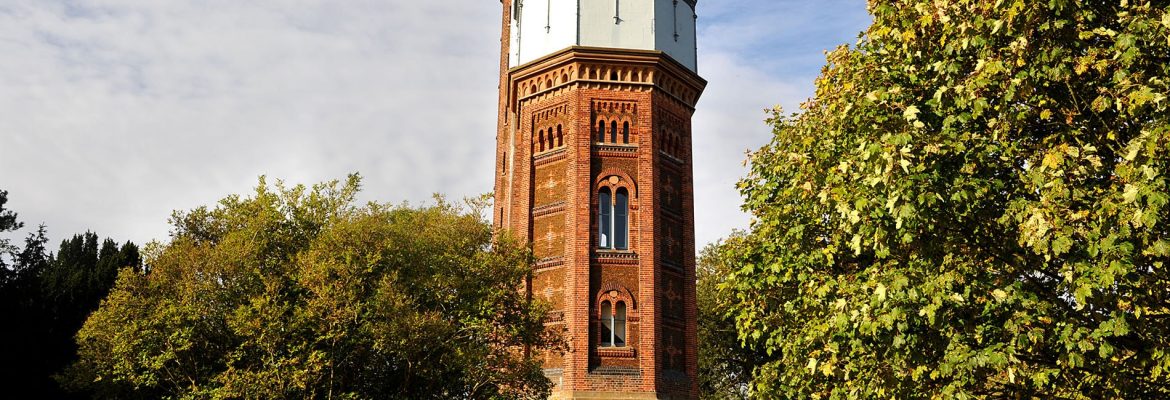Appleton Water Tower
Waterborne typhoid was a scourge of the Victorian age in city and countryside alike, and was believed to have caused the death of Queen Victoria’s beloved spouse, Albert, in December 1861. Ten years later, in November 1871, Victoria’s eldest son and heir, Albert Edward, fell ill in Scarborough, and doctors diagnosed typhoid fever. His life hung in the balance for several weeks, the anxious queen travelling north for the vigil to Sandringham – her son’s private and unofficial residence. Unlike his father, ‘Bertie’ recovered, and he vowed to ensure the water supply at Sandringham was safe.
To do this he employed Robert Rawlinson, an engineer who had made his name devising ingenious sanitation solutions for British troops during the Crimean War, and James Mansergh, who was then overseeing the provision of water from Wales to Birmingham. Bore holes were dug and a chalk spring on a ridge above the village of Appleton on the fringe of the estate was identified. A new pumping station was built to freshen and purify the water, and Rawlinson designed a splendid brick water tower 18 metres high to provide the requisite pressure to carry the supply across the estate. Italianate design and a picturesque stair turret disguise this utilitarian function.
England Culture & Tourism Route © Monika Simon Newbound 2020


